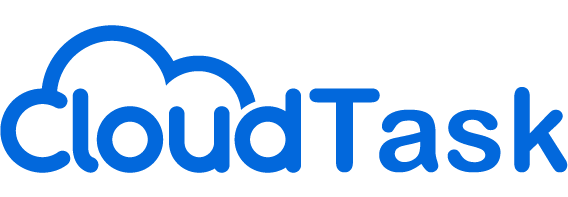Before you sell your product or service, you need to obtain leads, but not all leads are the same.
- A small percentage are ready to buy and eagerly seeking the solution you offer – those are the prospects you’re after.
- Others need what you have but are not in a rush or have other options – those you need to nurture.
- Yet others stumbled upon you by accident or mistake and don’t really need or want what you sell – those you need to identify a.s.a.p. and send them on their way.
Most companies today are using a variety of methods to capture leads. When someone shows interest in your company, signing up for your newsletter or webinar, or reaching out through social, you have a marketing qualified lead (MQL).
The problem is that an MQL is not necessarily ready to purchase. A staggering 79% of marketing leads never convert into sales. So, how do you move those MQLs through your sales funnel and convert them into sales qualified leads (SQLs)? And once you have your SQLs, how do you close the deal?
Read on to find out the 7 steps to accomplish it and sell more.
Step #1 – Know your buyer persona and journey
You must know your ideal customer and the process that customer goes through to become aware of, consider, and decide to purchase your product or service. Ask yourself these questions:
- What motivates your ideal customer to take action?
- What’s your ideal customer’s greatest pain point?
- What’s the best way to communicate with him/her?
When you understand the above, then you can create the content and the messages to attract leads. Develop a buyer persona, that is, a representation of your ideal customer for everyone in your marketing and sales team to have in mind when communicating with prospects.
Step #2 – Align sales and marketing
It’s not uncommon for sales teams to say the leads they get from the marketing team are bad, and for marketing to claim that sales doesn’t follow up long enough.
Research has shown that when marketing and sales work as separate silos, it wastes budget and resources, costing companies millions of dollars. On the other hand, a report that found that when you successfully align sales and marketing, you generate 32% higher revenue, retain 36% more customers and achieve 38% higher win rates.
That’s why sales and marketing should work together. They can either be fused as one team or simply have improved communication between them (smarketing).
Both marketing and sales should work on a unified customer journey for the same buyer persona – the teams should move customers along the same experience, the same funnel, and even track the same KPIs.
For example, there’s no point in marketing launching a campaign to attract SaaS companies, while sales is targeting recruitment firms…
Step #3 – Nurture your marketing leads through multiple touch-points
You must build a relationship with your leads and gain their trust if you want them to buy from you. The key is to provide value, offering the information they need at the right time.
Provide relevant content depending on the stage of the buyer’s journey the person is at. Marketing automation tools are great for this – they can track the journey and send out emails or notifications at the right time.
On average, it takes 6-8 touches or content interactions to generate a sales qualified lead. Sounds like a lot, but it’s worth it. Research shows that leads nurtured with targeted content produce an increase in sales opportunities of more than 20%.
Also nurture your leads through timely personalized follow-ups. You’re getting to know them and their pain points so you can provide a customized message that will let them know you care about them.
Step #4 – Implement an omnichannel approach
Use every available channel to connect with your leads – calls, chat, email, SMS, social media, and more. Make the experience consistent and complementary through all those channels. That’s omnichannel marketing.
When the messaging leads get from your outreach is consistent and always focused on taking them through a particular journey, the chances of them becoming sales qualified leads, increase dramatically.
Step #5 – Use outbound on inbound leads
Many companies rely heavily on content marketing, a type of inbound marketing, to attract leads to their site and build brand awareness.
Inbound leads are your hottest leads, no doubt about it. So why not prioritize them and use outbound (i.e. cold calling, direct messaging, etc) to ensure you get ROI from your marketing campaigns?
Don’t be afraid of combining the two approaches. While inbound will generate MQLs, your outbound efforts will convert them into SQLs, further qualifying them and moving them down the sales funnel.
Step #6 – Respond quickly
According to HubSpot, the odds of a lead becoming qualified are 21 times greater when contacted within five minutes versus 30 minutes. We could say the same about a qualified lead becoming a customer.
An SQL is probably at a stage where many questions need to be answered quickly in order to tip them over buying from you. And if they’re deciding between you and another competitor, response time may be the factor that tips the scale in your favor.
A great way to beat your competition in response times is by using the power of live chat. An email may take a day or more to get a response. A form is too impersonal. A phone call may feel like too much hassle. But live chat allows for an immediate response in a personal way, on your prospects terms.
At CloudTask, we’ve found that an SQL that chats with a member of the sales team is 2-3 times more likely to close compared to a lead that just fills out a form.
Step #7 – Ask for the sale
This one may be obvious, but surprisingly many deals are not closed because the sales rep didn’t ask for the sale. From fear of rejection to insecurity about when and how to ask, there are many reasons why this happens.
The best time to ask for the sale is when you have nurtured your lead and answered their questions. In other words, you have done your homework with the points above.
Start by asking open-ended questions (What do you think? How do you feel about that?) to gauge how the lead is feeling about the deal. Then ask the closing question (you want a yes or a no) and don’t be afraid of sealing the deal. If you showed them the benefits and added value, they should be ready to buy.
Follow the process
You’re after results – closing deals and growing your revenue. Use the process outlined above to help take your leads through the marketing and sales funnel, and obtain more conversions.





